Digital Poster
Fetal & Placental Imaging
ISMRM & ISMRT Annual Meeting & Exhibition • 10-15 May 2025 • Honolulu, Hawai'i

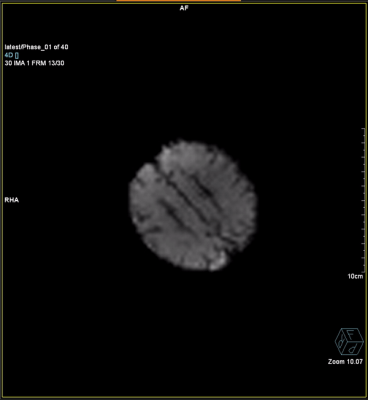 |
Computer Number: 113
3611. Real-time
fetal head motion tracking for prospective motion correction in
fMRI
H. Fan, X. Wang, D. Joca, D. Franson, J. Wang, D.
Splitthoff, K. Chow, R. Faghihpirayesh, C. Velasco-Annis, S.
Warfield, S. Cauley, A. Gholipour
Siemens Medical Solutions, Boston, United States
Impact: Real-time fetal brain segmentation and
registration with one-TR latency enable effective
motion-correction in fetal fMRI, allowing motion data from
one repetition to guide adjustments in subsequent frames.
This significantly enhances data reliability and usability
in fetal fMRI studies.
|
|
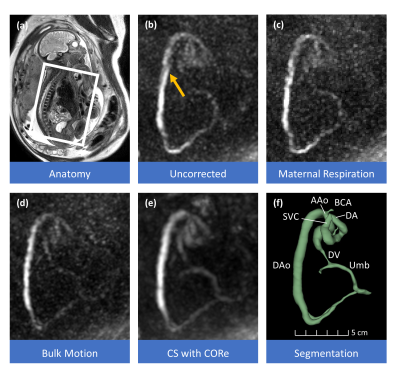 |
Computer Number: 114
3612. Third
Trimester Fetal 4D Flow MRI with Motion Correction
R. Tompkins, T. Fujiwara, E. Schrauben, L. Browne, J. van
Schuppen, S-A Clur, R. Friesen, E. Englund, A. Barker, P.
van Ooij
Amsterdam University Medical Center, Amsterdam, Netherlands
Impact: The proposed method of maternal respiratory
gating and fetal bulk motion correction combined with data
outlier rejection in fetal 4D flow led to a reduction in
motion artifacts, recovery of previously corrupted scans,
and improved conservation of mass.
|
|
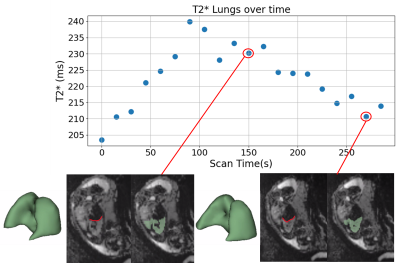 |
Computer Number: 115
3613. Learning
how to Breath: Automatic Fetal Breathing Motion Identification
and Quantification using MRI
K. Payette, J. Steinweg, J. Aviles Verdera, P. Lamata, E.
Goksen, A. Uus, M. Hall, L. Story, J. Hajnal, M. Rutherford,
J. Hutter
University Children's Hospital Zurich, University of Zurich, Zurich, Switzerland
Impact: With further testing and validation, the
automated detection of fetal breathing movements could
become a useful and widespread clinical tool to quantify
fetal pulmonary health.
|
|
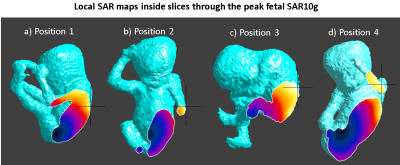 |
Computer Number: 116
3614. Incorporating
realistic fetal motion into RF safety assessment of fetal MRI
F. Yetisir, N. Dey, A. Titelman Ashkenazy, B. Billot, E.
Abaci Turk, E. Adalsteinsson, P. Golland, P. Grant
Boston Children's Hospital, Harvard Medical School, Boston, United States
Impact: We demonstrated a pipeline to incorporate
realistic fetal motion into SAR estimations for the first
time, enhancing RF safety assessment of fetal MRI. Our
results show fetal motion is critical for accurate tissue
heating estimations in the fetus.
|
|
 |
Computer Number: 117
3615. Improving
image quality and decreasing SAR with high dielectric constant
pad in 3.0T fetal MRI
Z. ZHU, X. Xue, T. Tang, Z. Lin, C. Luo, Y. Li, M. Li, C.
Yan, B. Zhang
The Affiliated Drum Tower Hospital of Nanjing University Medical School, Nanjing University, Nanjing, China
Impact: In clinical setting, adding HDC pad can increase
overall quantitative and qualitative image quality while
reducing dielectric artifact and SAR.
|
|
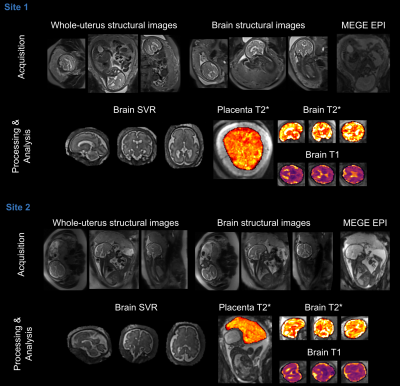 |
Computer Number: 118
3616. Comprehensive
anatomical and quantitative low-field fetal MRI multi-centre
study
S. Neves Silva, J. Aviles Verdera, A. Uus, S. Schmidt, C. S.
Mathy, S. Arulkumaran, F. Faschingbauer, M. Schneider, M.
Rutherford, S. Ourselin, J. Hajnal, M. Uder, J. Hutter, S.
Schulz-Heise
KCL, London, United Kingdom
Impact: The shown high degree of robustness and
agreement in the present multi-centre fetal MRI study at
0.55T paves the way for wider usage - enabling fetal MRI in
novel cohorts such as high BMI and late gestation and thus
democratizing.
|
|
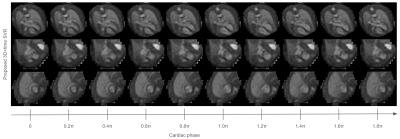 |
Computer Number: 119
3617. Automated
reconstruction of 3D+time fetal cardiac MRI from stacks of
Doppler-gated slices
A. Boutillon, N. Clarke, T. Woodgate, A. Schneider, J.
Steinweg, R. Franklin, A. Price, T. Roberts, A. Uus, J.
Hajnal, K. Pushparajah, D. Lloyd, M. Deprez
King's College London, London, United Kingdom
Impact: This preliminary study opens new potential for
the use of Doppler-gated imaging in conjunction with SVR for
3D+time fetal cardiac imaging in a clinical context through
the development of a fast, reliable, and automated
reconstruction pipeline.
|
|
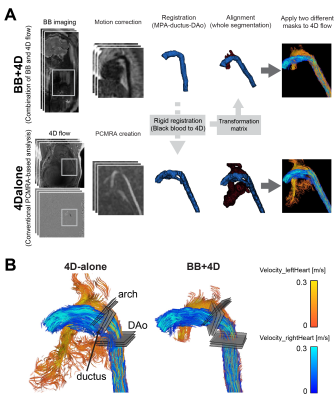 |
Computer Number: 120
3618. Flow
quantification in the great vessels for third trimester fetal
coarctation using 3D motion corrected black blood imaging and 4D
flow MRI

T. Fujiwara, S. Park, R. Tompkins, E. Englund, E.
Schrauben, R. Friesen, L. Browne, P. van Ooij, A. Barker
Children's Hospital Colorado, University of Colorado Anschutz Medical Campus, Aurora, United States
Impact: Vessel segmentation for fetal 4D flow is
challenging, but our approach combining 4D flow and motion
corrected black blood imaging may facilitate segmentation
and flow quantification of the distal aortic arch for
coarctation patients, potentially improving diagnosis of
prenatal coarctation.
|
|
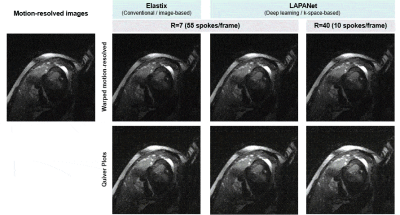 |
Computer Number: 121
3619. Real-time
Registration In K-space For Cardiac Cine MR Of The Fetal Heart

A. Ghoul, C. Roy, S. Nordmeyer, S. Gatidis, T. Küstner
University Hospital of Tübingen, Tuebingen, Germany
Impact: Our method reliably estimates planar bulk fetal
movement and periodic maternal respiration from highly
undersampled radial k-spaces in real-time acquisitions. This
eliminates prior reconstruction for registration purposes
and dealing with residual artifacts, enabling more efficient
and motion-robust fetal heart imaging.
|
|
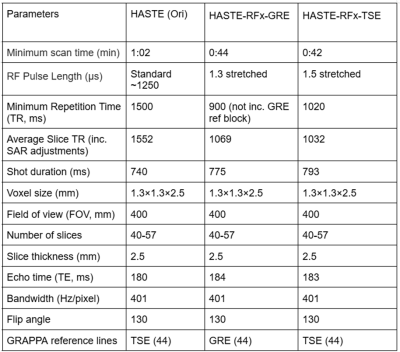 |
Computer Number: 122
3620. Putting
the haste back into T2 HASTE- optimising fetal MRI scanning
K. Colford, S. Arulkumran, S. McElroy, R. Franklin, K. St
Clair, W. Norman, C. Fauni, M. Marenzana, A. Uus, J. Hajnal,
A. Price
Kings College London, London, United Kingdom
Impact: Reducing TR in T2 HASTE sequences used in fetal
MRI by 33%, can increase the number of scans performed
clinically or reduce the time in research taken up by
acquiring anatomical images.
|
|
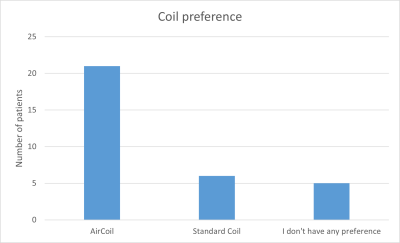 |
Computer Number: 123
3621. Impact
of flexible coil technology for fetal MR imaging:
Intraindividual comparison with use of conventional coil
J. Poujol, T. Médar, L. Rai, J. Vincent, L. Bobet, S.
Vaillant, F. Robb, A. Guidon, L. Bussieres, L. Salomon, D.
Grévent
GE HealthCare, Buc, France
Impact: The introduction of the AIR™ Coil for fetal MRI
significantly enhances patient comfort without compromising
image quality, making it a valuable advancement in prenatal
imaging that can improve the overall experience for pregnant
women undergoing MRI procedures.
|
|
 |
Computer Number: 124
3622. Comprehensive
assessment of uterine contractility using a large database of
dynamic T2* studies

J. Aviles Verdera, Y. Luo, S. Neves Silva, S. McElroy,
H. Waheed, S. Bansal, R. Tomi-Tricot, M. Rutherford, J.
Hajnal, J. Hutter
King's College London, London, United Kingdom
Impact: Uterine contractility assessed during dynamic
uterine T2* scans allows novel insights into this phenomenon
and paves the way for real-time detection in the future.
|
|
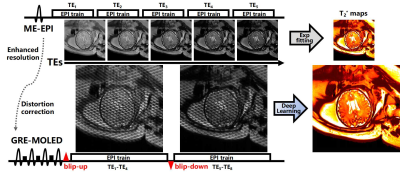 |
Computer Number: 125
3623. Improved
T2* mapping in fetal brain and placenta using fast multiple
overlapping-echo acquisition
Q. Yang, N. Ge, J. Bao, S. Cai, Z. Chen, C. Cai
Xiamen University, Xiamen, China
Impact: The proposed GRE-MOLED method achieves
improved T2* mapping
for the fetal brain and placenta within the same acquisition
time as conventional EPI method, offering a promising
solution to the limitations of low spatial resolution and
distortion artifacts.
|
|
 |
Computer Number: 126
3624. Evaluation
of placental perfusion for gestational diabetes mellitus and
fetal growth restriction using arterial spin labeling
G. Yan, Q. Wen, X. Liu, K. Li, Y. Zou
Women’s Hospital School of Medicine Zhejiang University, Hangzhou, China
Impact: PCASL is a useful non-invasive tool for
measuring placental blood flow in pregnant women, which may
aid in diagnosing pathological developments or abnormalities
in the placenta of pregnancies.
|
|
 |
Computer Number: 127
3625. Placental
pathology in infants with Congenital Heart Disease is associated
with new postoperative brain injury
D. Cromb, M. Hall, A. Bonthrone, M. Al-Adnani, M.
Rutherford, S. Counsell
King's College London, London, United Kingdom
Impact: Brain injury and placental pathology are common
in CHD. Placental pathology appears to be associated with an
increased risk for new postoperative brain injury in infants
with CHD, potentially allowing high-risk individuals to be
identified prior to undergoing surgery.
|
|
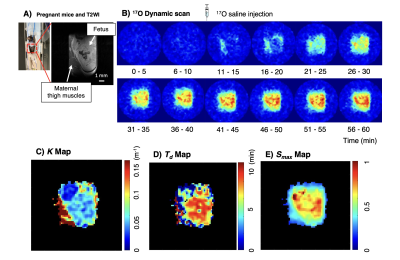 |
Computer Number: 128
3626. Direct
Measurement of Fetus Water Dynamics Using 17O-MRI
N. Nitta, H. Zhang, M. Tomiyasu, Y. Tachibana, J. Kershaw,
K. Kudo, T. Obata
Central Institute for Experimental Medicine and Life Science (CIEM), Kawasaki, Japan
Impact: This is the first report of a direct,
non-invasive method that has successfully observed fetus
water dynamics.
|
The International Society for Magnetic Resonance in Medicine is accredited by the Accreditation Council for Continuing Medical Education to provide continuing medical education for physicians.